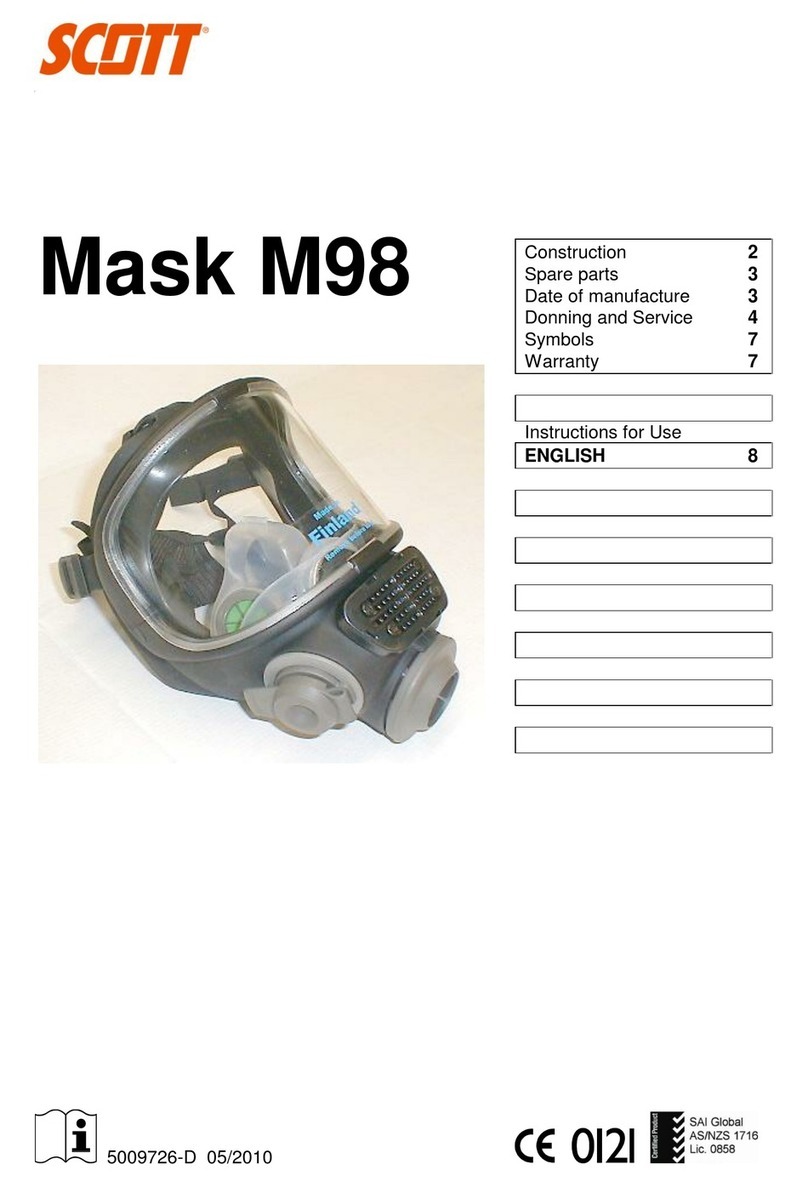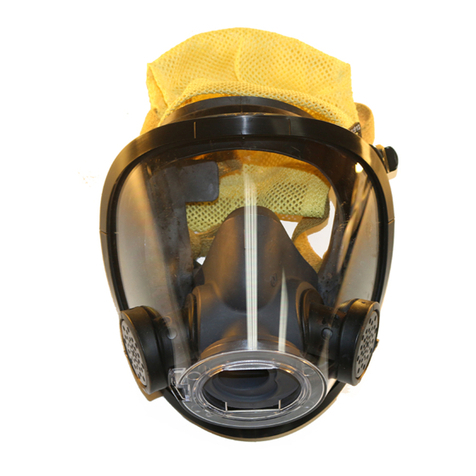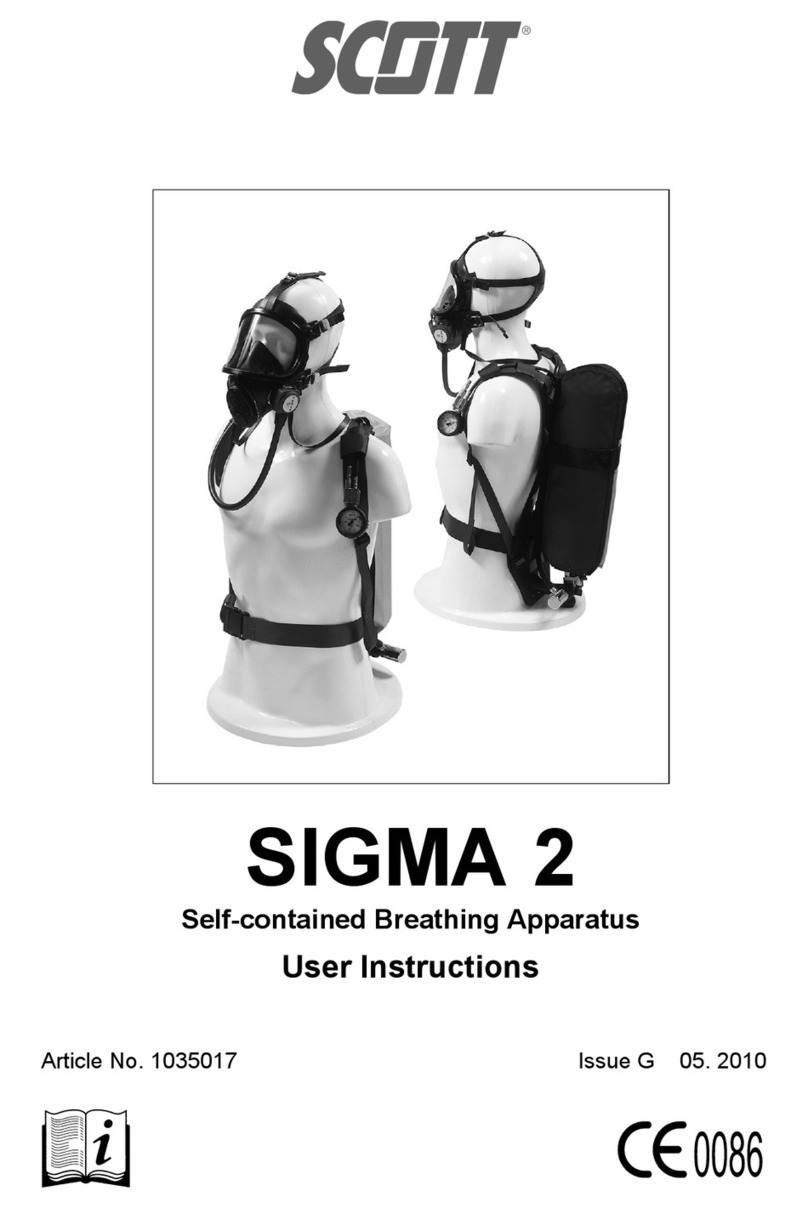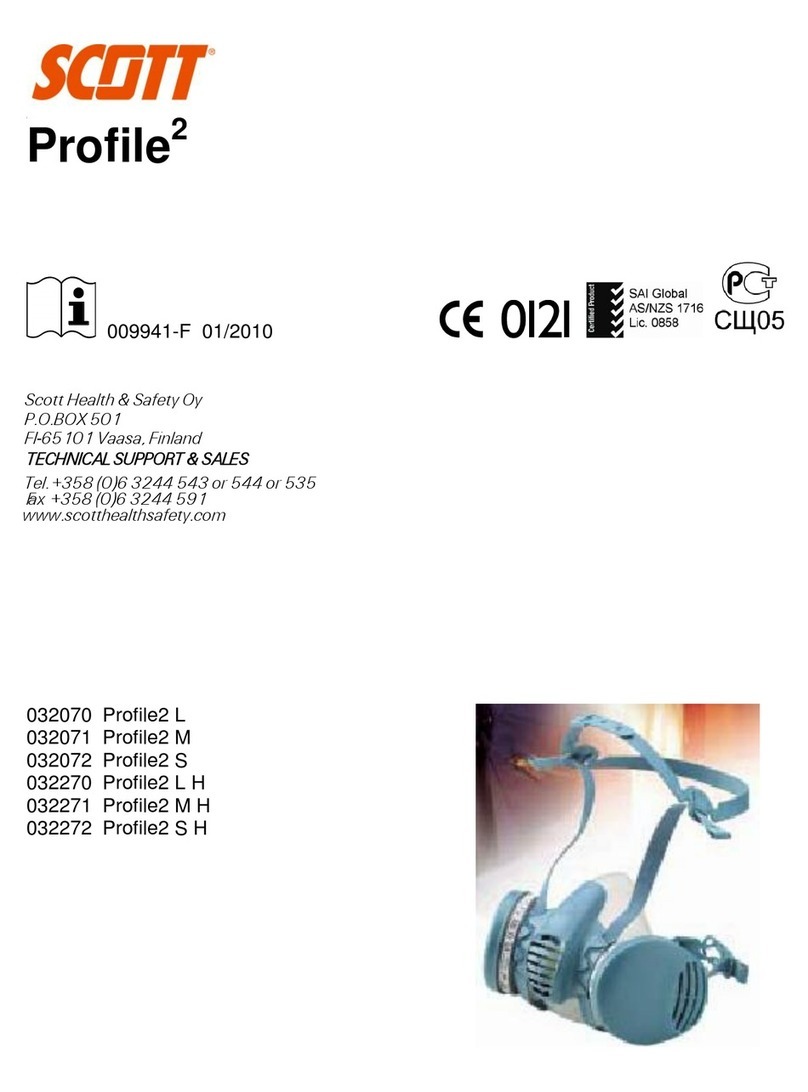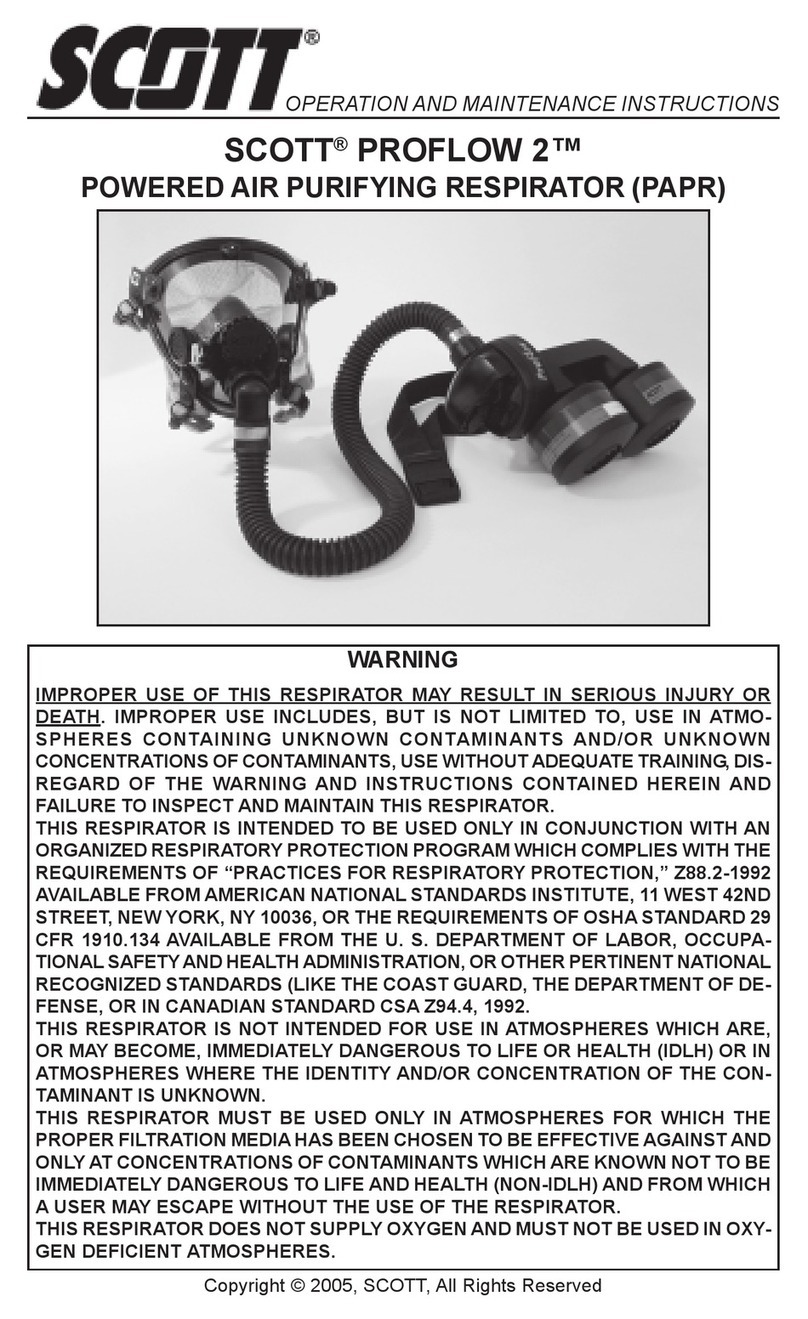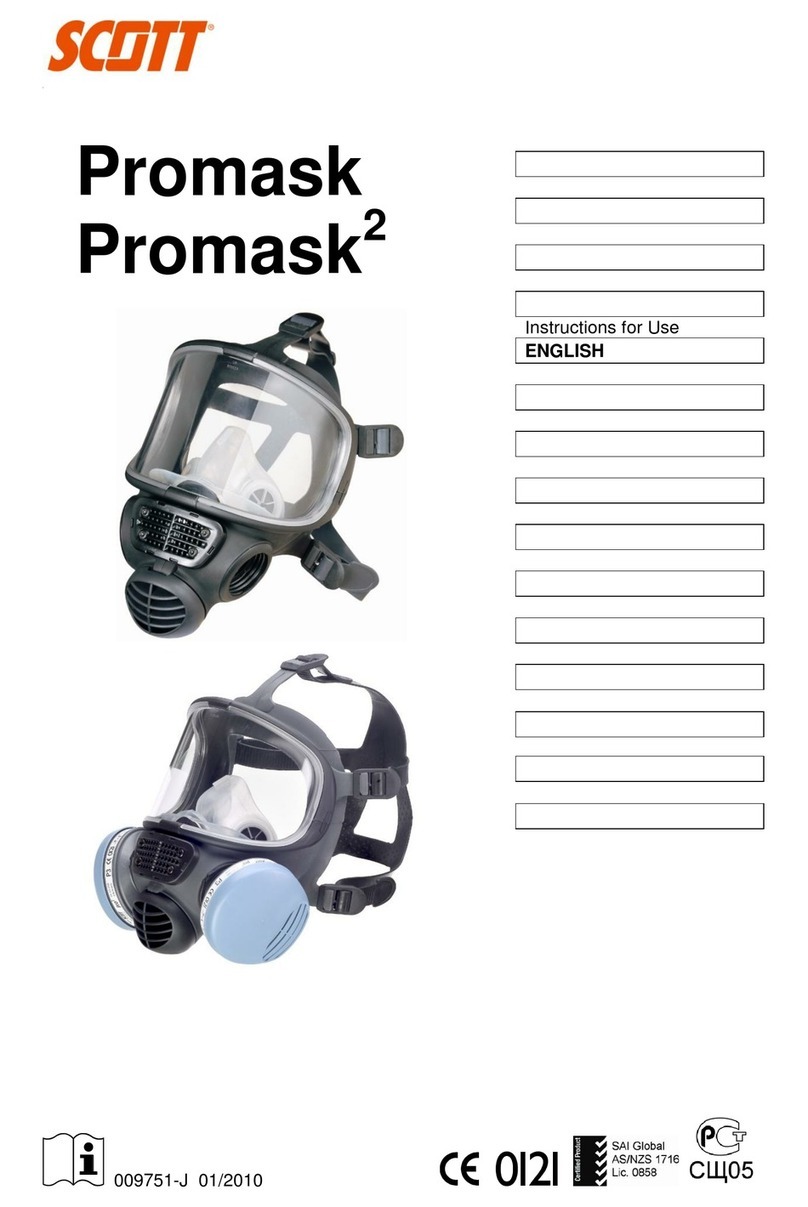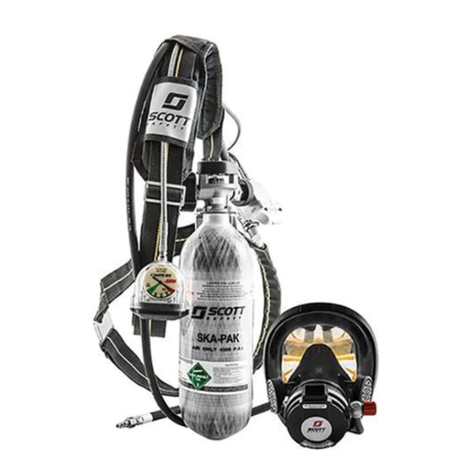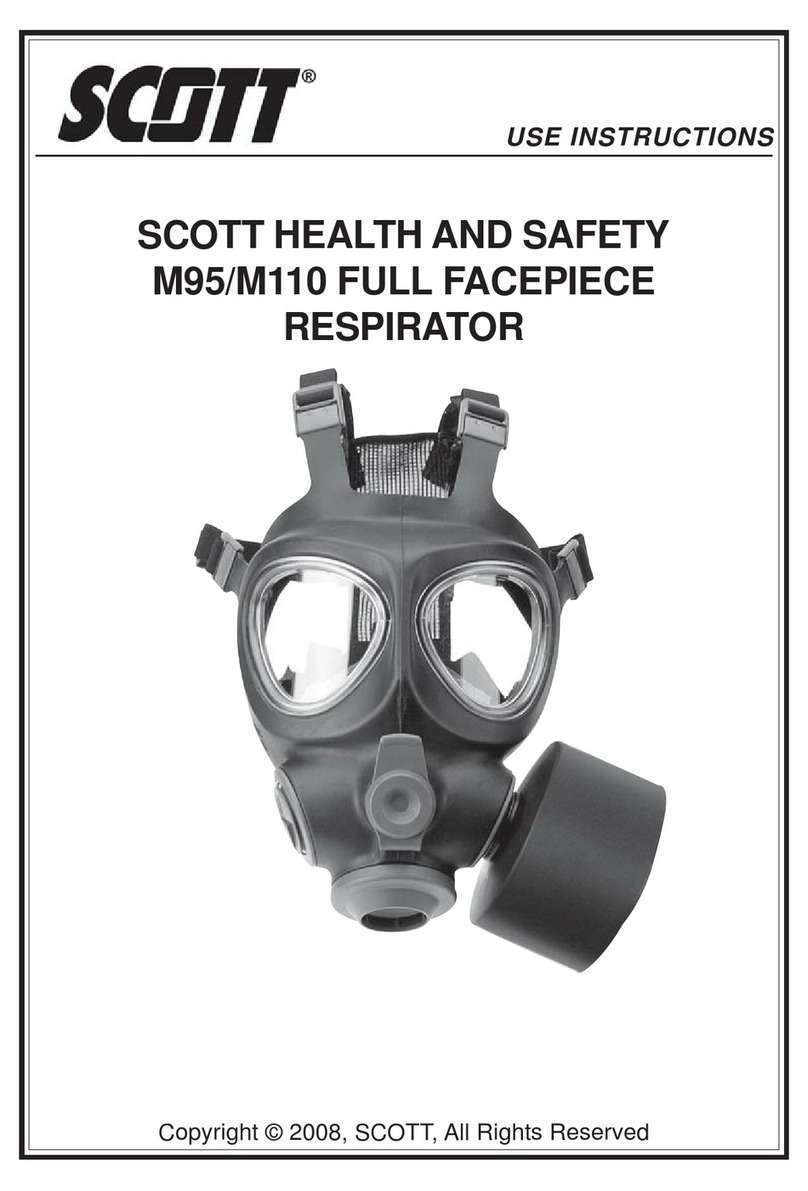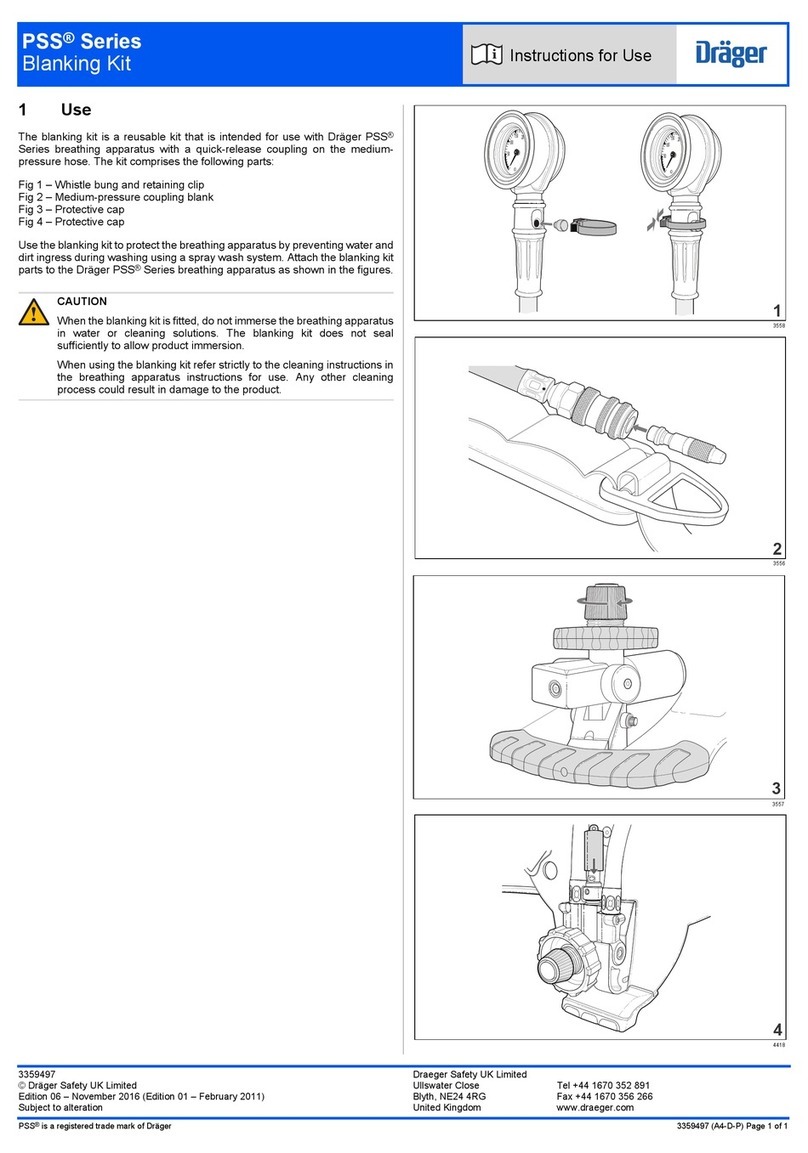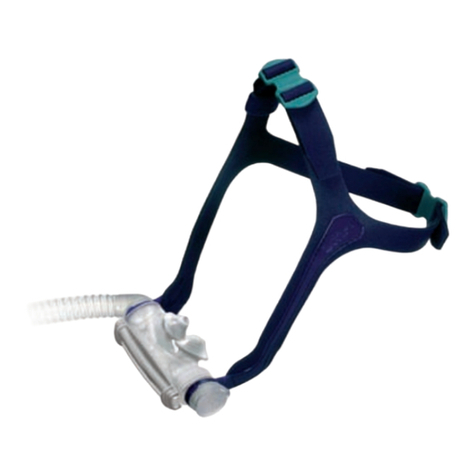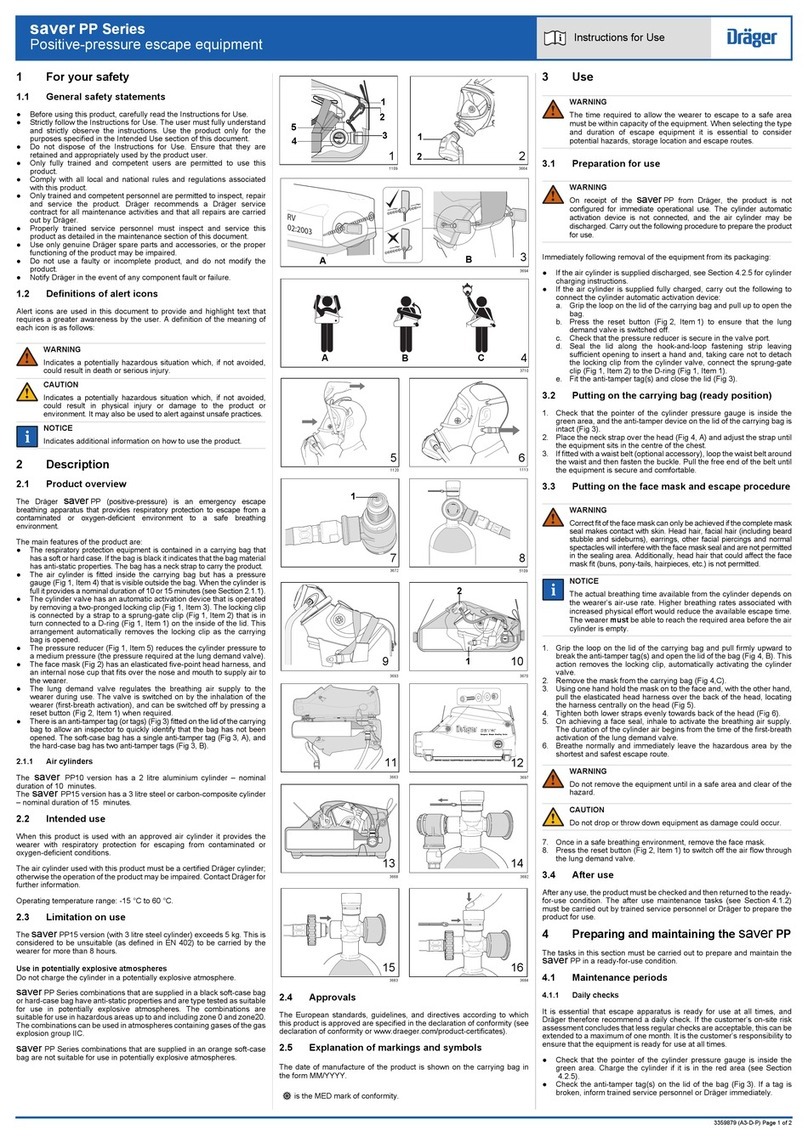
i
Self-contained Breathing Apparatus
Contents
WARNINGS................................................................................................................................................................. ii
1. INTRODUCTION.............................................................................................................................................1
1.1 IMPORTANT ...............................................................................................................................................1
1.2 BREATHABLE AIR......................................................................................................................................1
1.3 COMPRESSED AIR AIRLINE SUPPLIES...................................................................................................1
1.4 APPARATUS DURATION ...........................................................................................................................2
1.5 PERSONNEL TRAINING ............................................................................................................................2
1.6 SERVICING.................................................................................................................................................2
1.7 SPARE PARTS AND ACCESSORIES ........................................................................................................3
1.8 NOTIFIED BODIES.....................................................................................................................................3
2. TECHNICAL DESCRIPTION ..........................................................................................................................3
2.1 PNEUMATICS.............................................................................................................................................4
2.2 REDUCER...................................................................................................................................................4
2.3 DEMAND VALVE ........................................................................................................................................4
2.4 FACEMASK.................................................................................................................................................5
3. QUALITY ATTRIBUTES .................................................................................................................................5
3.1 NOTIFIED BODIES.....................................................................................................................................5
4. CHECK APPARATUS.....................................................................................................................................6
4.1 FIT FULLY CHARGED CYLINDER.............................................................................................................6
4.2 CHECK DEMAND VALVE...........................................................................................................................6
4.3 CHECK CYLINDER PRESSURE / LEAK TEST..........................................................................................7
4.4 WHISTLE TEST..........................................................................................................................................7
4.5 FIT CLEAN FACEMASK .............................................................................................................................7
4.6 CHECK APPARATUS .................................................................................................................................7
5. DONNING & OPERATING PROCEDURE – Standard Apparatus ...............................................................8
5.1 DON APPARATUS......................................................................................................................................8
5.2 CHECK DEMAND VALVE...........................................................................................................................8
5.3 OPEN CYLINDER VALVE...........................................................................................................................9
5.4 DON FACEMASK........................................................................................................................................9
5.5 POSITIVE PRESSURE TEST.....................................................................................................................9
5.6 WHISTLE / FACESEAL TEST ....................................................................................................................9
5.7 CHECK CYLINDER PRESSURE ..............................................................................................................10
6. DONNING & OPERATING PROCEDURE – Airline Apparatus..................................................................10
6.1 DON APPARATUS....................................................................................................................................10
6.2 CHECK DEMAND VALVE.........................................................................................................................11
6.3 CONNECT SUPPLY..................................................................................................................................11
6.4 FIT FACEMASK ........................................................................................................................................11
6.5 POSITIVE PRESSURE TEST...................................................................................................................11
6.6 FACESEAL TEST......................................................................................................................................12
6.7 OPERATING CYLINDER SUPPLY ...........................................................................................................12
7. DOFFING INSTRUCTIONS ..........................................................................................................................13
7.1 REMOVE FACEMASK ..............................................................................................................................13
7.2 TURN OFF CYLINDER VALVE / DISCONNECT SUPPLY.......................................................................13
7.3 REMOVE APPARATUS ............................................................................................................................14
7.4 CLEAN & TEST APPARATUS ..................................................................................................................14
8. AFTER USE ..................................................................................................................................................14
8.1 CLEAN FACEMASK..................................................................................................................................14
8.2 CLEAN APPARATUS................................................................................................................................15
8.3 CHECK APPARATUS ...............................................................................................................................15
8.4 RECORD TEST DETAILS.........................................................................................................................15
8.5 STORAGE.................................................................................................................................................16
9. SCHEDULED MAINTENANCE.....................................................................................................................16
9.1 MONTHLY.................................................................................................................................................16
9.2 ANNUALLY ...............................................................................................................................................16
Registered office: Scott Health and Safety Limited, Pimbo Road, West Pimbo,
Skelmersdale, Lancashire, WN8 9RA, United Kingdom.

